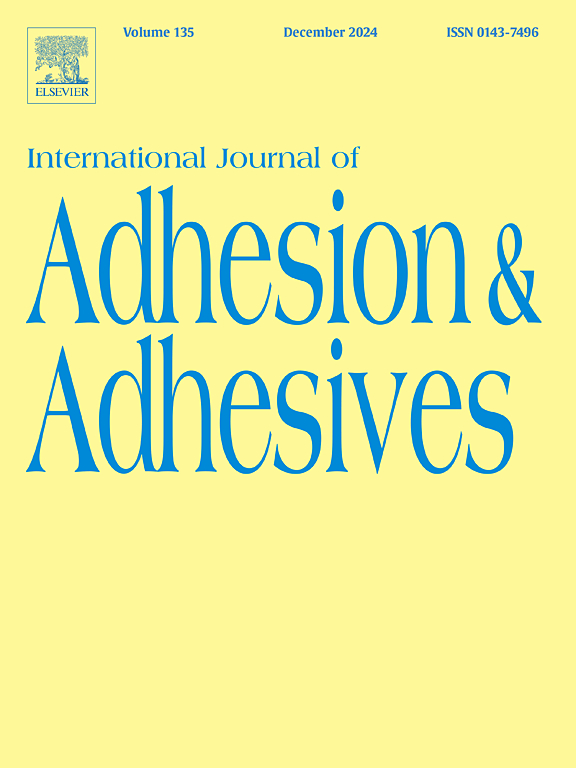Exploring the impact of graphene nanoplatelets on adhesive mechanical strength: A comprehensive investigation into single-lap joint elastoplastic behavior via cohesive zone method
IF 3.2
3区 材料科学
Q2 ENGINEERING, CHEMICAL
International Journal of Adhesion and Adhesives
Pub Date : 2024-12-09
DOI:10.1016/j.ijadhadh.2024.103908
引用次数: 0
Abstract
This research conducted a thorough examination on the effects of graphene nanoplatelets (GNPs) reinforcement on the mechanical strength of low-viscosity epoxy and elastic-plastic strength of single-lap joints (SLJs) by using finite element analysis (FEA) and experimental procedures. The reinforcing process of GNPs within low strength adhesive was accomplished by using controlled mixing techniques and the SLJ configuration samples were fabricated using AW 6063-T6 Aluminum adherends (that were mechanically and chemically treated). Tensile tests on bulk composite adhesive showed that the inclusion of GNPs significantly enhanced the mechanical properties of epoxy matrix. Maximum improvement of 775.46 % in ductility was noted with the addition of 0.1 % GNPs. Moreover, 51.43 % and 166 % improvements in elasticity and tensile strength were obtained by adding 1 % GNPs, respectively. Besides, 123.21 % maximum improvement in SLJ shear strength was obtained by adding 1 % GNPs. Thereafter, the experimental results were incorporated into the computational modeling workflow, where the trapezoidal cohesive law was employed based on cohesive zone modeling (CZM) scheme. Prediction accuracy of the numerical model was examined by comparing its results with experiment results and strong agreement was observed with relative error of 6 % in the case of 0.1 % wt. GNPs. At the same wt.%, the effects of geometric modifications on the joint performance were explored. A significant decrease in the concentration of stress at important joint locations was observed, indicating improved joint integrity and failure resistance. Peel stress was seen to rise with overlap duration, indicating that longer overlaps had higher peel stress.
求助全文
约1分钟内获得全文
求助全文
来源期刊

International Journal of Adhesion and Adhesives
工程技术-材料科学:综合
CiteScore
6.90
自引率
8.80%
发文量
200
审稿时长
8.3 months
期刊介绍:
The International Journal of Adhesion and Adhesives draws together the many aspects of the science and technology of adhesive materials, from fundamental research and development work to industrial applications. Subject areas covered include: interfacial interactions, surface chemistry, methods of testing, accumulation of test data on physical and mechanical properties, environmental effects, new adhesive materials, sealants, design of bonded joints, and manufacturing technology.
 求助内容:
求助内容: 应助结果提醒方式:
应助结果提醒方式:


